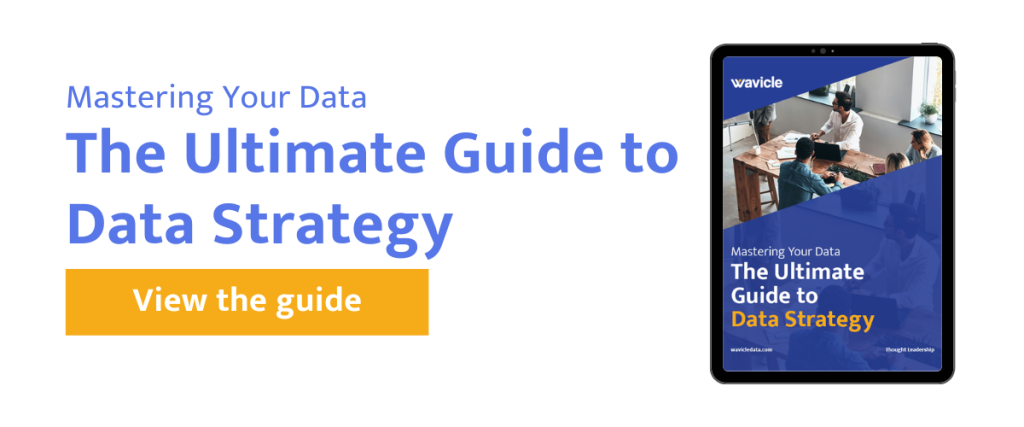In an increasingly data-driven world, a well-crafted data strategy is a necessity for businesses aiming to thrive in the digital economy. But where do you start? And more importantly, how can you ensure that your strategy doesn’t just exist on paper but translates into tangible business value?
From aligning with your organization’s strategic goals to avoiding the allure of a one-size-fits-all data strategy approach, this blog will delve into the do’s and don’ts of data strategy that can either make or break your data initiatives.
1. Alignment: Start with the end in mind
Do: Establish clear objectives
Success requires aligning your data strategy with your core business objectives. Clearly define what you want to achieve with your data initiatives. Whether it’s improving customer experiences or optimizing operational efficiencies, specific goals set the trajectory for your data strategy.
Example: A manufacturer wanting to enhance worker safety, increase equipment uptime, and reduce costs should focus its data strategy on enabling the predictive maintenance of machinery, using analytics to prevent failures and unwanted downtime.
Don’t: Chase after shiny data objects
Avoid being lured by flashy trends and the latest data fads without considering how they serve your enterprise goals. Adopting every new technology or chasing every data trend can distract from the core objectives and dilute the potential for true success.
2. Data governance: People and process are as important as the technology
Do: Establish a modern data governance framework
Invest in a robust data governance program that considers both technical and human factors. Good data governance encompasses data quality, data security, and data privacy while adhering to regulations. It also involves establishing roles, responsibilities, and processes for data handling.
Example: A leading pharmaceutical company partnered with Wavicle to create a robust data governance framework to improve data quality and informed decision-making for better healthcare provider (HCP) and patient outcomes. Learn more.
Don’t: Neglect the cultural shift
Don’t overlook the people side of governance. Cultural alignment is vital. Your governance strategy should integrate with your corporate culture and be adopted at every level of the organization. Tools are essential, but without buy-in from the team, they’re less effective.
3. Data management: Fit is more important than features
Do: Prioritize fit over features
When selecting data management solutions, focus on what aligns with your organization’s data and business needs. Consider scalability, ease of use, and integration capabilities. A system with the most features isn’t useful if it doesn’t integrate well into your existing data environment.
Example: Wavicle partnered with Pilot Company to implement a unified data solutions framework with Amazon S3, Databricks, and Snowflake for faster, more cost-effective analytics and improved decision-making. Read more.
Don’t: Fall for the feature overload
Beware of over-prioritizing feature-rich platforms if they don’t align with your business needs. Choose tools and systems that will actively support your primary data management goals rather than opting for bells and whistles that might never get used.

4. Data integration: More than just landing data
Do: Prepare for comprehensive data integration
Recognize that data integration is a multi-layered process. Start by identifying redundant data sources and then work on streamlining data collection, transformation, and loading (ETL). An integrated data ecosystem is the backbone of effective analytics and reporting.
Example: A strategic data integration approach is crucial for a retailer aiming to provide customers with personalized product suggestions derived from their previous purchases and browsing history, resulting in increased online sales and customer satisfaction. This ensures swift insights, reliability, and scalability across all systems.
Don’t: Rush the integration process
Data integration is a step-by-step process. Rushing can lead to misaligned or faulty data, resulting in inaccurate insights and poor decision-making. It’s crucial to maintain a balanced approach, ensuring that integration efforts are sufficiently thorough.
5. Data sourcing: Ensure scalability
Do: Implement scalable data sourcing solutions
Your data sourcing should not only serve current needs but also be agile enough to cater to future requirements. Scalable data sourcing solutions can grow with your business demands, reducing future complexities and costs.
Example: Merchants Fleet partnered with Wavicle as a forward-looking partner to help them build future-proof data architecture, reporting, and data models to support their rapidly growing business analytics needs. Read more.
Don’t: Neglect future-proofing data sourcing
Focusing only on present data requirements without considering future scalability can lead to a siloed and inefficient data strategy. Future-proof your data sourcing efforts by choosing solutions that accommodate growing data volumes and new types of data.
6. Intentional AI: Plan ahead
Do: Incorporate AI use cases
AI has a diverse number of offerings whose application varies across industry verticals. Ensure your data roadmap is holistic and keeps pace with the competition by incorporating and prioritizing AI use cases alongside other data use cases, including data management, descriptive analytics, BI, and advanced analytics.
Example: McDonald’s leveraged the power of AI to improve consumer insights, amplify social listening, and uncover customer sentiment and context at scale. Read more.
Don’t: Invest in AI hype
AI is a rapidly evolving space with features from even major software players changing week-over-week. Although many of these features are indeed singular technology breakthroughs, that alone does not mean they will provide meaningful uplift for your bottom line. Make your AI bets carefully and ensure their alignment to ROI, just as you would any other investment.
Building a strong data strategy
Crafting a successful data strategy is akin to navigating a labyrinth; it requires foresight, precision, and a keen awareness of potential pitfalls. By aligning your data strategy with your business objectives, identifying the right approach, cultivating executive support, and managing change effectively, you position your company to harness the full potential of its data assets. Conversely, avoid the common traps such as implementing untested technologies or underestimating the importance of business alignment and risk management. Remember, a solid data strategy isn’t just about technology; it’s about people, processes, and continual adaptation.
As you venture forward in shaping your data strategy, consider partnering with experts who can guide you through the complexities and customize a plan that resonates with your unique business needs. Contact Wavicle today to ensure that your data strategy looks great on paper and delivers a substantial business impact. Let us help you turn data into your competitive advantage.


